NEXT WEEK: GUIDED MEDITATION MINI-RETREAT
MARCH 24-28, 7-7:30 PM EDT
I’ve rarely led guided meditations but this feels like the right time for this kind of practice; the kind that helps you destress, gather yourself together and experience some ways to be stable and relaxed within your life and your world right now.
Each practice will be drawn from Thich Nhat Hanh’s teachings on the Mindfulness of Breathing - which is about body, mind, feelings and breathing. I will guide you through breathing exercises combined with TNH’s four-line gathas/verses to help reconnect to your basic goodness and confidence, and down-regulate your nervous system.
Then we will sit in silent mindfulness meditation and finish up with a few easy stretches.
There will be time for Q & A, too. This retreat will be an enriching experience and everyone is welcome!
Here is part 2 of last week's excerpt from my next book called: New Yoga City. If you missed Part 1 check it out here, “The Hottest Mandala in Town.”
Please do me a favor and make your way to the bottom of the post to like or comment. It really helps a lot with bringing more attention to my work and I so appreciate it.
New Yoga City, Part 2:
The Hottest Mandala in Town
“Everyone,” I’d say quietly and, I hoped, with dignity, “please find your seat.” The students would wiggle their bums around, getting situated on their blanket/cushions. “Place your palms down on your thighs. Close your eyes and find your breath.”
I didn’t close my eyes. I watched my students settle in. Sometimes even just this small beginning to the class would bring a person to tears. OM yoga practice offered a genuine invitation to let yourself feel, and lots of things could come up. So while the yogis paid attention to what they were feeling, I paid attention to the yogis, like a mother watching her children. Right then my practice was not doing yoga, it was teaching yoga. My job was to protect the mandala, our sacred environment; the beautiful old wooden floor, eggshell walls, and sky blue ceiling that contained and supported us, allowing us to relax the gripping so often required just to get through a New York day.
I opened my mouth and in a clear voice, made the sound of OMMMMMMMMMM. OMMMMMMM, the group responded. Again, I called out OM and they responded. And then a third time, OMMMMMM and they chanted OMMMMMM. Then we sat quietly as the sound died away.
Sometimes I talked about the meaning of OM in the way that my guru, Gelek Rimpoche had taught me. It was a good way to start a yoga class. “OM is the union of body, speech and mind. Can you notice when you feel that your body, speech or breath, and mind are integrated and when they are not? Whatever you notice,” I’d say, “is fine and interesting.” I wanted the students to know that yoga was about being engaged and curious. Without saying the word mindfulness, I was teaching them how to pay attention to their experience at the same time that it was happening. Without saying the word lovingkindness, I was teaching them that whatever they felt inside themselves was basically good.
After chanting OM, we would do pranayama, breathing practice. Then a warm-up vinyasa, usually a seated movement sequence designed to unwind and wake up the body in simple ways: side bending, back bending, forward bending, twisting. These movements were harmonized with the breath; inhale and arms go up, exhale and arms go down. Inhaling and exhaling to an even rhythm is a basic yoga breathing method which helps to balance the nervous system. This kind of warm-up helped people feel like they had “arrived” and was another way to create community: the students were listening to me, but looking at each other. When your arms went up, you saw people across from you lifting their arms at the same time. Everybody was breathing and moving together right from the start.
Then I guided them through a spontaneously choreographed way to go from sitting to standing. Maybe I would do something upbeat and fun like having them bring their knees into their chests and rock and roll on their spines until they gained enough momentum to just stand right up! Or maybe I would offer something a little slower, like shifting forward from cross-legged sitting onto hands and knees for a few Cat/Cows—arching and curling the spine. Finally, a slow inhale, and a long breath out to press up into Downward Facing Dog.
“Slowly walk your hands back to your feet, feeling every hand step along the way, as if you are doing a walking meditation.” Slipping in another little mindfulness instruction, I might add, “Can you take interest in your experience right now?” After a sensual rounding up of the spine, here we are, all the way up to standing tall.
“Place your left thumb in the palm of your hand and close your fingers around it. Wrap your right hand around your left in a soft two-handed fist. This is the walking meditation mudra. Let your gaze drop to the floor a few feet past the front of your mat and slowly walk forward to the top of your mat. Take your time. Notice the shift of weight from one leg to the other. Notice the texture of your yoga mat. Notice each brand new step.”
Once everyone had arrived at the top of their mats, we were almost ready to start moving. But we still had one more organizational task to do. Because the thing was that on a big class night like this, if you reached your arms out to the sides, you would most likely stick your fingers in somebody else’s ears.
So we moved the mats again, staggering them so that the first was pulled forward a few inches and the next one pulled back a few inches. Even today I am amazed that this is not the norm in yoga studios! It’s not exactly higher mathematics to be able to figure out that if every other mat went forward or back, it opens up space. Space is so much of what yoga is about—in mind and body. And all movement, including the movement of yoga asana, is about carving space, dancing with space and form; filling empty space and emptying full space.
This was what we all did together at OM yoga, every day and night. People trusted each other and themselves, that even while reaching, jumping back, lunging forward and folding in half, they would still be essentially contained in their own little 6 x 3 ft. space. As the mother of the mandala, my purpose in creating this organizational assignment was to keep everybody safe and alert.
But I also took advantage of this brief moment of technical interaction to secretly transform it into a way for the yogis to become friends. Instead of specifically directing the mat placement exercise—you go forward, you go back… I would say, “You will have to figure out how to make this work by… talking to each other!” This usually got a laugh and in about two minutes it was all worked out, friendships were begun and with everyone newly situated back in Tadasana, Mountain Pose, we were ready to go.
Now we moved through a progressive series of Sun Salutations—stepping back into Downward Dog, into jumping into Down Dog and landing with bent knees, into jumping into chadarunga and flying into Upward Dog. At this point, I’d take the class idea I’d had before beginning—maybe something about imprinting the actions and positions that made up the current Pose of the Month—and combine that with what I’d learned from watching the students. What did they know or not know? Where were they clear or confused? What areas of understanding were weak and could be addressed through modified movements, deconstructed asanas, or parts of poses grafted onto other poses? I let myself be as smart and creative as I could be and it generated a feeling of alert willingness among the students. The structure of the class was fairly consistent but none of us knew exactly what might happen in any class. Each action, position and transition was alive, unpredictable, and yet familiar in just the right combination to keep us all awake and open.
The practice of yoga is a deeply personal, internal experience, but when done in a group yoga class it is also a social event. Not that it’s a party or a prayer circle. It’s not the kind of practice that is a rehearsal for something that will happen later either, like a play or concert. It’s a re-integration of the parts of ourselves that are common to each other. You might be thinking about that martini at Florent, but your breath is syncing with forty-five other people. You are all sweating in unison. Your heartbeats are entraining. The yogis listened to each other. They felt each other. They moved together in such a connected and liquid way that when they dove their chest up into Up Dog and then swung their hips back into Down Dog, it felt as if the floor of the studio was swinging back and forth like the bubble in a carpenter’s level.
Such an experience is exhilarating and, for many of us, it’s a huge relief to be part of a ballet that is bigger than our own hopes and fears, aches and pains, dramas and boredom. As we paid attention to the alignment between our knee and our hip, we also paid attention to our alignment as a group. The class became a call and response, a conversation between the teacher and the students. OM yoga class was not about being better or special. It was not about being solemn or devout or ascetic. It was about being exactly who we always were, only now we were us doing yoga. It was about sensing what was common between all of us, our basic goodness. Because of this, it was not possible to get it wrong and the invitation to take interest in what was going on within and without you felt enlivening.
OM yoga class gave people more strength, flexibility, focus, confidence, and cardiovascular health. But they also got something that doesn’t come from an exercise class, not even from what one of my friends calls “exercise class using yoga shapes”. It can’t be found in a fancy gym where the mats are laid out for you and you are handed a towel when you sign in. Because you have to do all the work yourself. Nor can the kind of magic that came from OM be found in an online yoga class that you do alone at home, because that magic came from the chemistry of the group. It came from the willingness of the OM yoga community to step together into my vision of a yoga practice: physically technical, spiritually embodied, and with lots of space for fun and joy.
After working on handstands at the wall and backbends on the mat, I moved the students back down onto the floor and into down-regulating sequencing that included supine twisting and seated forward bends. Lastly, a shoulder stand (using a minimum of two blankets to keep the neck safe) and then, finally, rest. How powerful for me to watch forty-five people lying on their backs, eyes closed, completely vulnerable and yet knowing that they felt safe because they knew I was watching them. Who was cold and needed a blanket? Who was sad and needed a tissue? Who was snoring and needed a toe tickle?
After ten minutes, I would quietly say, “Begin to deepen your breathing. Wiggle your toes and fingers. Roll onto your right side. Let your head dangle as you slowly round up to sitting.” I’d leave a gap between each of these instructions to give the students time to find their way back up to a seated position.
Another gap of silence because talking is not always the most effective form of communication for a yoga teacher. And it felt good to just sit together and feel the richness and spaciousness of this moment. Finally, the call and response of three more OMMMMMMMMs. Although I never told the students to do this, they always joined me in folding their palms and saying the Brahma Vihara, to dedicate our practice in the way that Gelek Rimpoche taught me.
Slowly the yogis would begin to stir. Some would sit for a few more minutes as others began to roll up their mats. One by one, they’d leave the studio and return to their neighborhoods, walking back across 14th Street to catch the subway to Brooklyn or the path train to New Jersey. When everyone was gone, I always took a last look at the empty space that had been so full.
It had been full of poses that flow one into the other, moving in rhythm with the breath. OM yoga style was called vinyasa, which is an embodiment of all of life. It is a flow from one pose into a transition and then into a new pose and on and on. Each part was of equal value and in this way, we were getting familiar with the flow of all things, which arise, abide and dissolve. And the dissolving of one thing is the arising of the next, even if we don’t yet know what that next thing will be.
The time and place for what happened at OM yoga has long passed. The major NYC yoga studios are mostly all shuttered. Some of the most influential yoga teachers and thinkers of that time have died. There was talk of a movement among some of the most hardworking yoga teachers to form their own union and take on the big yoga studio chains, but even the yoga chains have closed now. Interviewers ask me all the time, “What is next for the yoga world?” I can’t answer that. I know what has dissolved, but I don’t know what will arise next.
PAID SUBSCRIBER ZOOM MEDITATIONS WITH ME
Two Sundays ago I was joined by quite a few PAID SUBSCRIBERS for a lovely meditation. I talked a bit about how meditation is a refuge, we meditated for 17 minutes, did a little stretching and answered a couple questions. All in half an hour! We agreed to do it again every other month.
The next meditation session will be Sunday, April 6 at 12-12:30 pm ET.
Retreat is over half-way full - register soon!
This retreat is open to everyone! Our practice will focus primarily on sitting and walking mindfulness meditation, sustainable yoga, and restorative yoga. Yoga props will be available in the yoga studio and modifications will be offered for everyone. Each morning will include a short dharma talk and group discussion.





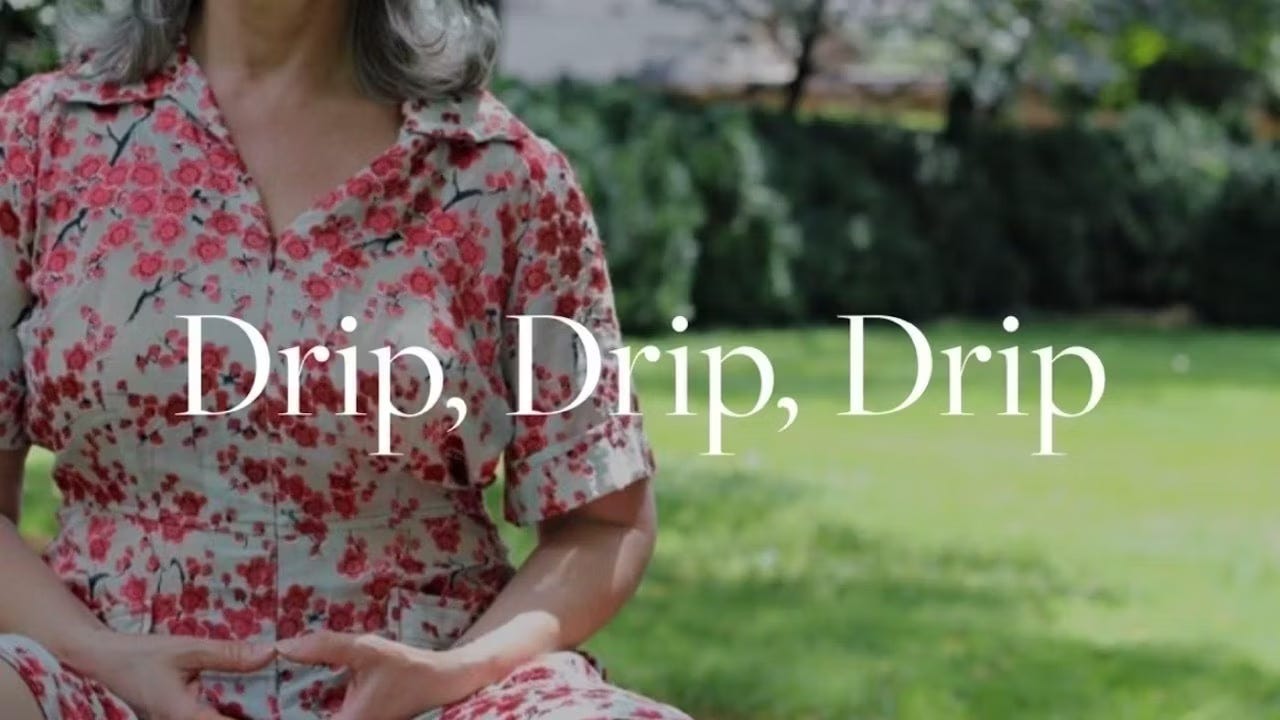
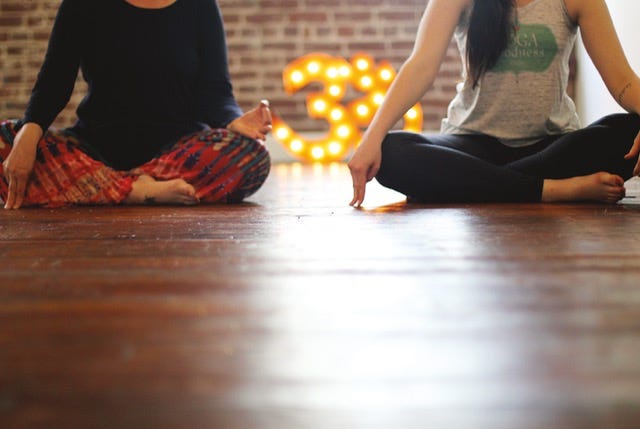

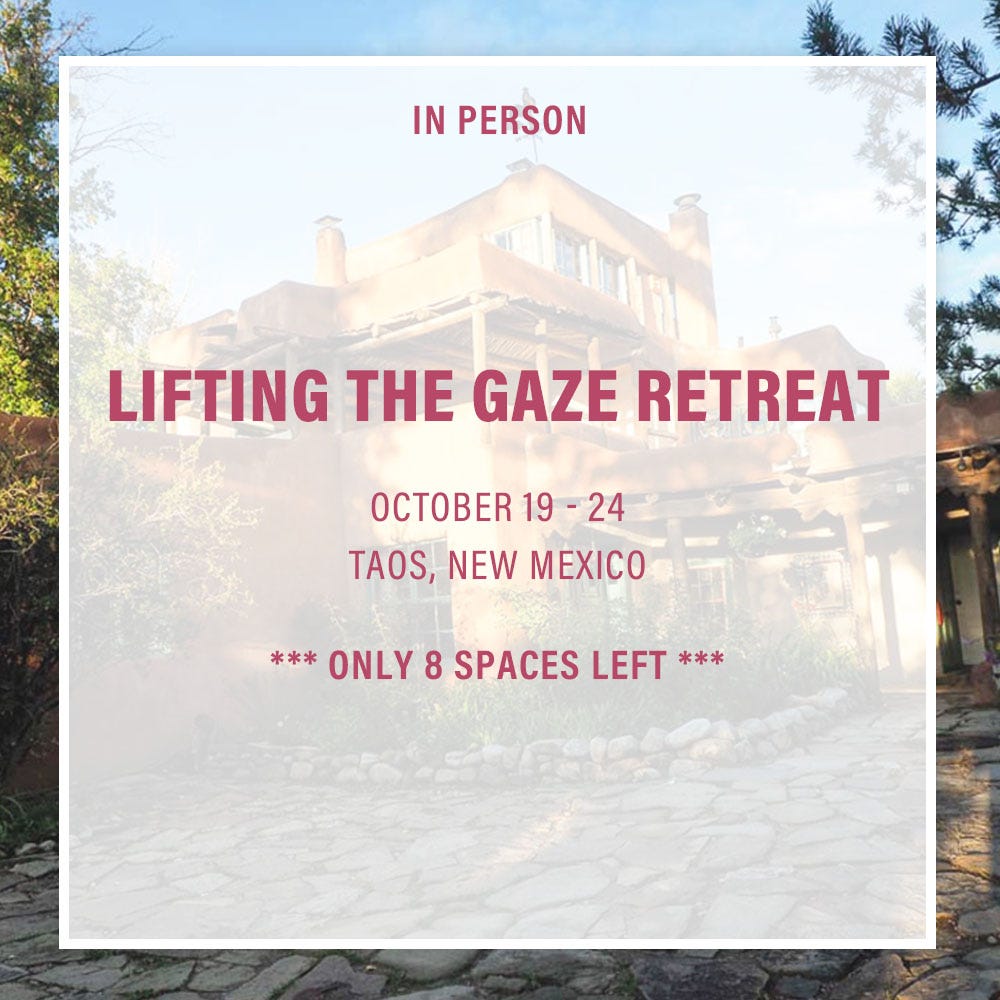
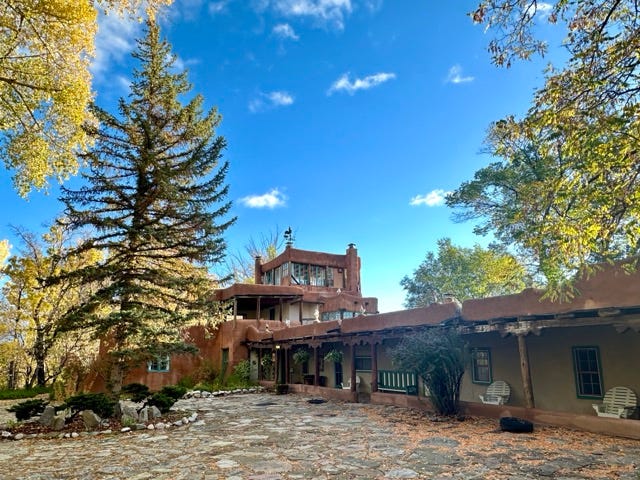

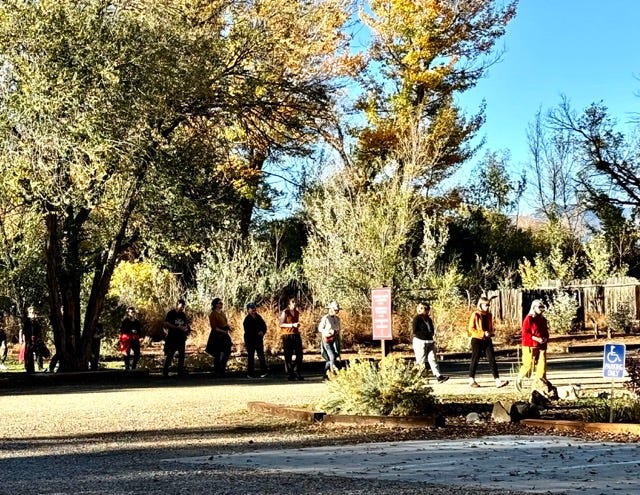
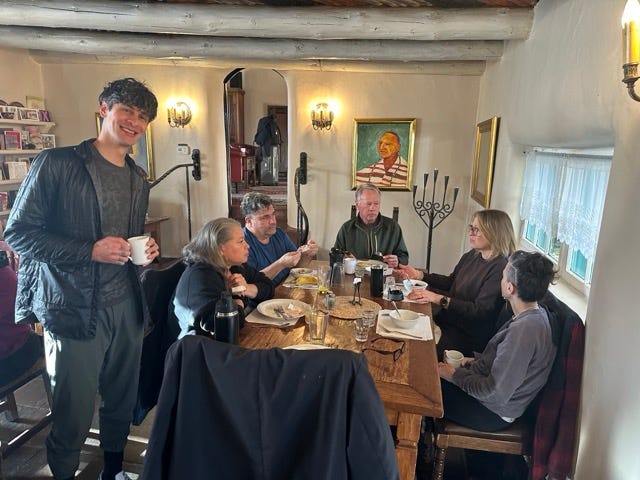
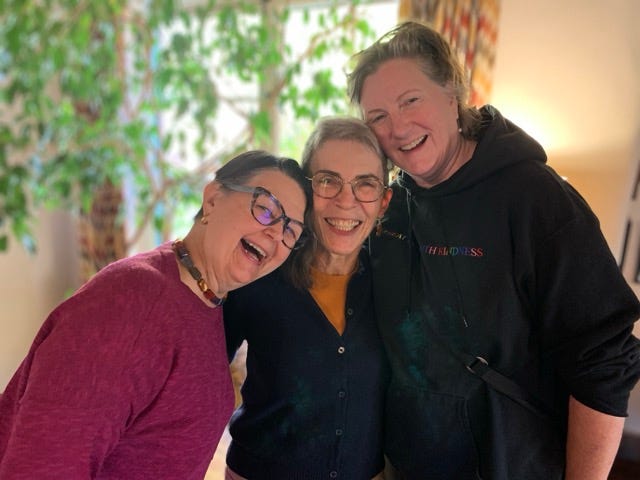
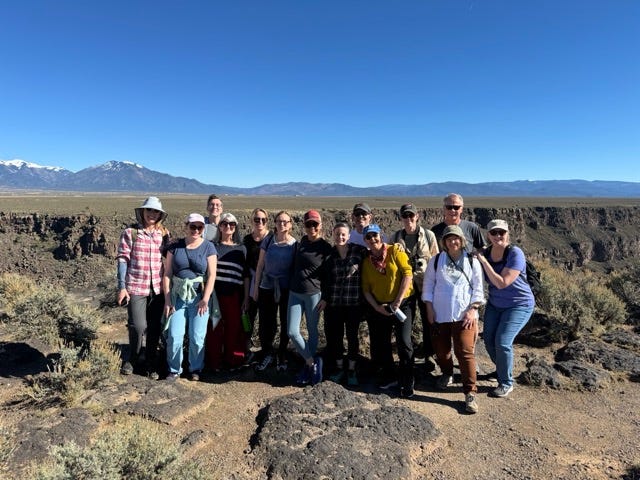
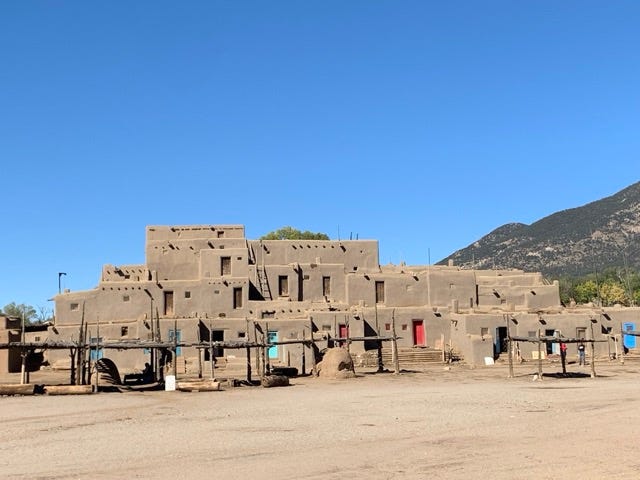
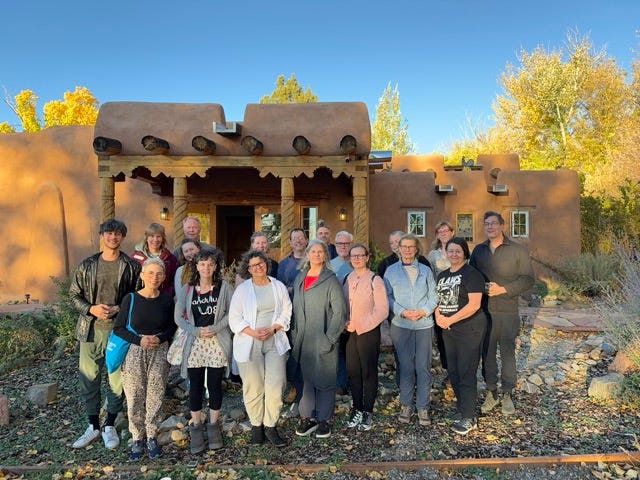
The bubble in the level! I love this description. The whole piece put me right back into your yoga classes. That ebb and flow of glorious humanity that is a full class with “New York real estate.”
“Right then my practice was not doing yoga, it was teaching yoga. My job was to protect the mandala, our sacred environment; the beautiful old wooden floor, eggshell walls, and sky blue ceiling that contained and supported us, allowing us to relax the gripping so often required just to get through a New York day.”